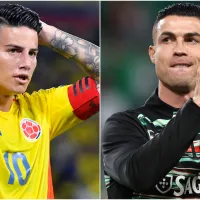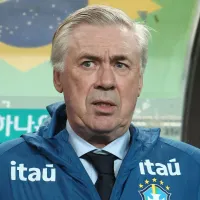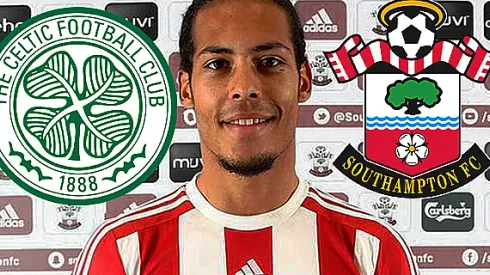
With five games until the half-way mark of the Premier League season, Southampton are at a bit of a crossroads. Sitting 10th, Southampton are nine points behind top of the league Manchester City, and they’re 10 points from the relegation zone.
Relegation was the fate that many predicted back in the summer of 2014, when Southampton sold off half a starting outfield. Luke Shaw, Rickie Lambert, Dejan Lovren, Adam Lallana and Calum Chambers were sold for $125 million. The critics and many fans were apoplectic at Southampton management and ownership sanctioning the “fire-sale,” and the conventional wisdom was bad times were ahead for a side that had only regained a place in the Premier League in 2012.
What the critics did not foresee was the quality of their replacements. The likes of Dušan Tadić, Graziano Pellè and Sadio Mane may have arrived with little fanfare, but before long the Chicken Littles were forced to eat their words.
How far off the mark were they? So wide of the mark that Southampton not only survived but actually improved and finished one place higher (seventh) than in 2013-14.
The exodus of 2015 was minor in comparison to the summer of 2014, with Nathaniel Clyne sold to Liverpool for $19 million and Morgan Schneiderlin to Manchester United for $37 million. However, the influx of new talent continued, with another seven players being added to the first team squad. While Juanmi (Malaga), Martina (FC Twente) and Romeu (Chelsea) have been limited to a fleeting number of appearances, Cedric Soares (Sporting Lisbon) has started 11 of Southampton’s 14 Premier League matches and has generally impressed as a right back with attacking flair. (He looks even better after Maya Yoshida, his replacement last Saturday, put in a less than stellar performance.)
However, it was a player who was signed just as September’s transfer window was slamming who has made the most seamless and impressive start to his Southampton career. It is a pattern that Virgil van Dijk established at Celtic.
In 2013, Van Dijk signed for Celtic from Groningen for $4 million, and his impact was immediate. After only a handful of games for Celtic, he was being linked to a move to the Premier League.
As it turned out, van Dijk spent two seasons at Parkhead. He gained experience in European club competition and picked up a few trophies with Celtic as well as being selected to the Scotland Team of the Year both times.
Southampton finished up paying Celtic $21 million for the now Dutch international, but when you consider that the club pocketed over $30 million from Liverpool in 2014 for fellow center back Dejan Lovren, it has the look of a bargain written all over it.
SEE MORE: Celtic, Dundee consider playing Scottish Premiership match in the US.
At 6-foot-4,van Dijk is as dominant in the air as you would expect. However, anyone expecting to see brute strength trumping technical skill is in for a big surprise. Van Dijk glides over the grass with the grace of a scheming midfielder, and he is as comfortable jumping into the midfield and waltzing past opponents as he is dispossessing them. In fact, he looks as much at home in midfield as he does in a back three or four.
He has a great range of passing and great composure (a shortcoming is overestimating his ability in some situations), and while his height makes him an obvious and very real menace on set plays, he is also a long-range shooting threat. Anyone who saw the howitzer Van Dijk hit against Manchester City on Saturday that nailed the crossbar can attest to his power.
https:\/\/www.youtube.com/watch?v=oY-RXVRpnUY
A solid case can be made for van Dijk and the man he directly replaced at Southampton, Toby Alderweireld, as the two best center backs in the Premier League this season. (Alderweireld spent last season at Southampton on loan from Atletico Madrid before making a permanent move to Spurs last summer.) Such is van Dijk’s rapid ascent over the last two years, it is not beyond the realm of possibility that before too long he could be one of Europe’s great defenders. If that time comes, Southampton will once again cash in, and no doubt the canny operators will have a replacement ready in the wings.
Why Celtic has become a feeder club for the Premier League
Celtic’s worldwide support dwarfs that of Southampton, but in terms of financial clout, it is no contest. Southampton generated revenue of $175 million for the year ending June 30, 2015, while Celtic recorded almost $100 million less at $79 million.
The reason is no surprise – the massive TV rights deals engineered by the Premier League. While Celtic has to make do with less than $4 million from the SPFL’s domestic TV rights pool, Southampton received $122 million.
What’s more there is little or no chance that the situation will change anytime soon. Some may see the transfer of Celtic players to a team that has never been considered as one of the top five or six in England as somewhat unseemly. During the 60s, 70s and 80s Celtic sold some of their stars to English clubs, but their destinations were the upper echelons of the English game – Pat Crerand to Manchester United; Kenny Dalglish to Liverpool; Charlie Nicholas to Arsenal.
The advent of the Premier League brought about a fork in the road. As Scotland produced fewer and fewer top class players, an influx of foreign players resulted, and the Scottish game became a gateway to the Premier League. Paolo Di Canio (Sheffield Wednesday), Pierre Van Hooijdonk (Nottingham Forest), Stilian Petrov (Aston Villa) and Ki Sung-Yeung (Swansea) were tempted south while Celtic was forced to start over again.
Celtic: a gateway to Southampton
Kenya international Victor Wanyama signed for Celtic from Beerschot in the Belgian League for around $1.5 million in 2011. A defensive midfielder, Wanyama scored the winner when Celtic beat Barcelona in the 2013 Champions League, but even by then it was clear that Wanyama had outgrown Scottish football and was ready for a greater test.
The additional challenge came when Southampton paid Celtic over $19 million for Wanyama in the summer of 2013. Wanyama’s first season in the Premier League proved to be a bit too much of a challenge. Often the Kenya international looked slow and ponderous, and a series of injuries didn’t help. It was last season, in tandem with Schneiderlin, that things began to really click for Wanyama.
Fraser Forster’s path to an England cap took an unusual path through Scottish football. As a young keeper Forster had bounced around the English game before a loan move to Parkhead. It was there that Forster began to fulfill his potential, and a permanent move from Newcastle to Celtic at a cost of $3.5 million was consummated.
Recognition at England’s highest level followed some stand out performances for Celtic domestically and in Europe. Southampton put in a bid of around $15 million in the summer of 2014, and Forster was immediately installed as the team’s first choice keeper.
Forster was an ever-present for Southampton until he broke a knee cap in March of this year, but he is now close to regaining full fitness, and he may even return before the New Year. A look at some comparison statistics provides a sense of Forster’s impact:
Southampton, with Forster: *29 games and 21 goals allowed for an average of 0.73 per game; clean sheets 13, or one every 2.23 games
Without Forster: *23 games and 29 goals allowed for an average of 1.26 goals per game; clean sheets 7, or one every 3.28 games.
*Premier League games last season and this one.
Southampton Scots
Prior to the globalization of the top flight of English soccer, Scottish players were almost an automatic for top English teams. Cross border rates took countless Scottish players south with higher wages and signing bonuses proving to be too hard to resist.
Southampton was never regarded as a club that targeted Scottish players, but there were some who arrived and made a lasting impression.
Jimmy Gabriel started off with Dundee before moving to Everton and then spent five seasons with Southampton. Of course, Gabriel would then find his way to Seattle and the Sounders, where he would achieve legendary status.
Three Scots were part of the Southampton squad when, as a second division side, the team won the FA Cup in 1976. Jim Steele (signed from Dundee) was as hard and as uncompromising as his name suggests.
Jim McCalliog was signed from 1975 from Manchester United and helped to defeat his former employers in the FA Cup final.
Hugh Fisher was at veteran stage of his career and was Southampton’s substitute (only one back then) when the club lifted their one and only top flight trophy.














